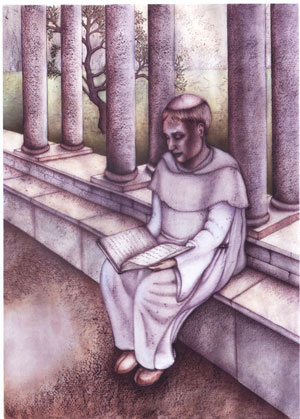 |
 |
 |
 |
 |
 |
 |
|
Learning An overview A cloister without literature is a grave for living men. Reading was an integral part of the monastic day. Through meditating on the text, the monk could enhance his spiritual development. At the start of Lent, each monk was given a book for the year which he was to read thoroughly during the daily period allocated to reading, as stipulated in chapter 48 of the Rule of St Benedict. Reading was not permitted to the lay-brothers, who were generally illiterate.In the thirteenth century a more formal approach was taken to education, and the Cistercians founded a college, or studium, in Paris, where members of the Order could receive a university education in an appropriate environment. This was St Bernard’s College. By the end of the thirteenth century, a studium had been established in England, at Oxford. This was Rewley College, but it was later replaced by St Bernard’s College, now known as St John ’s College Oxford. In this section you can find out more about the Cistercian studium at Oxford, reading about the history of the college, Cistercian scholars of note who studied here and details of what they studied; you can also view samples of their books. Surviving library catalogues from
Rievaulx Abbey shed considerable light on the abbey’s holdings in
the twelfth century. A number of books
from Fountains Abbey are now preserved in the British Library.
|
||
|
|
